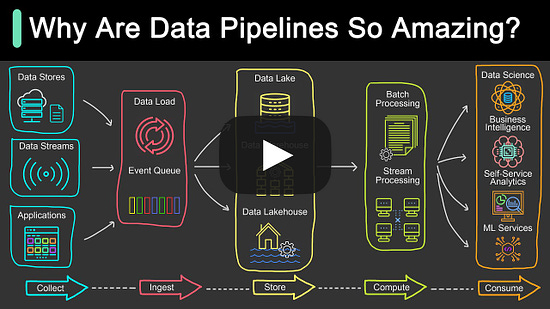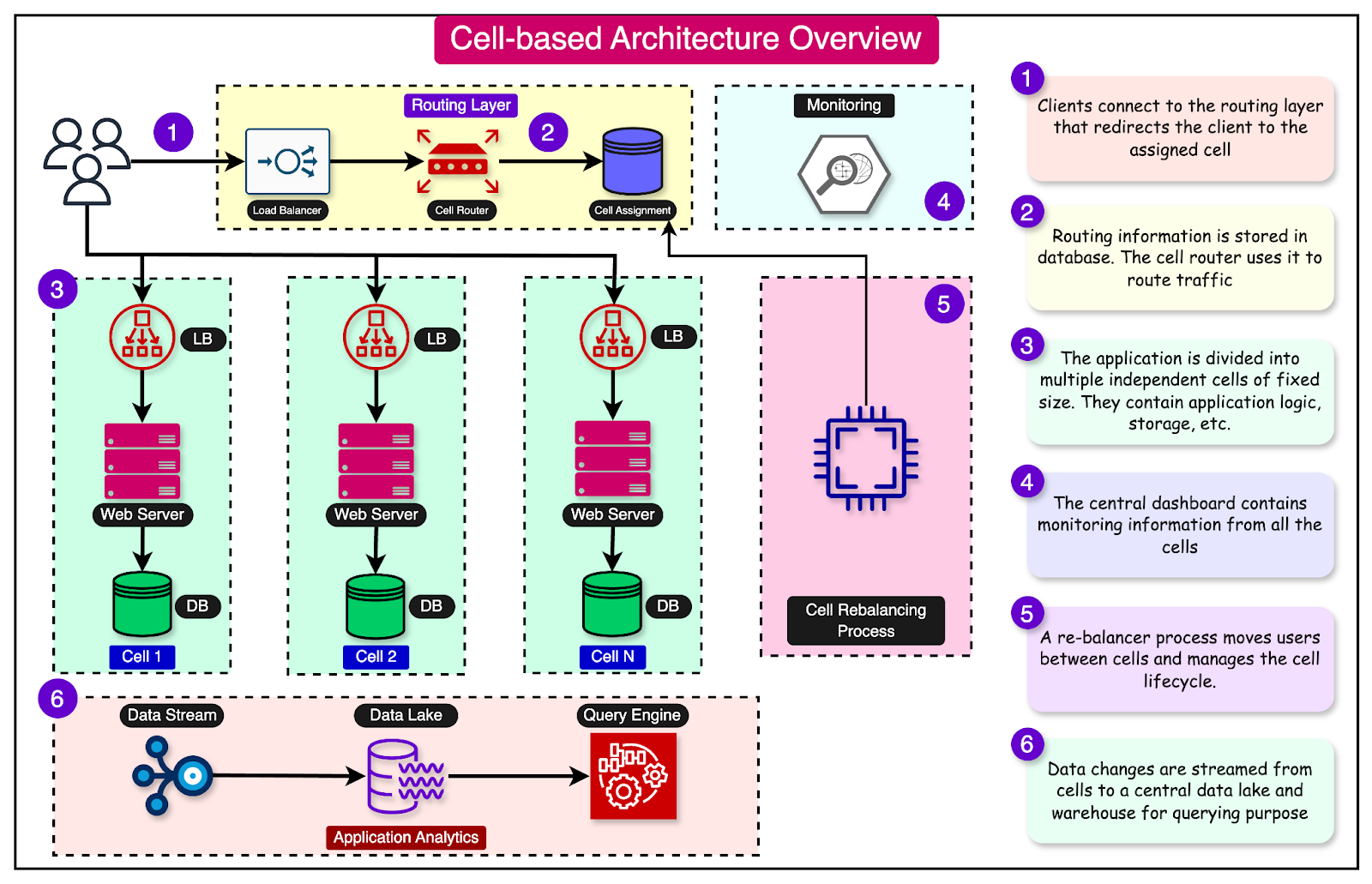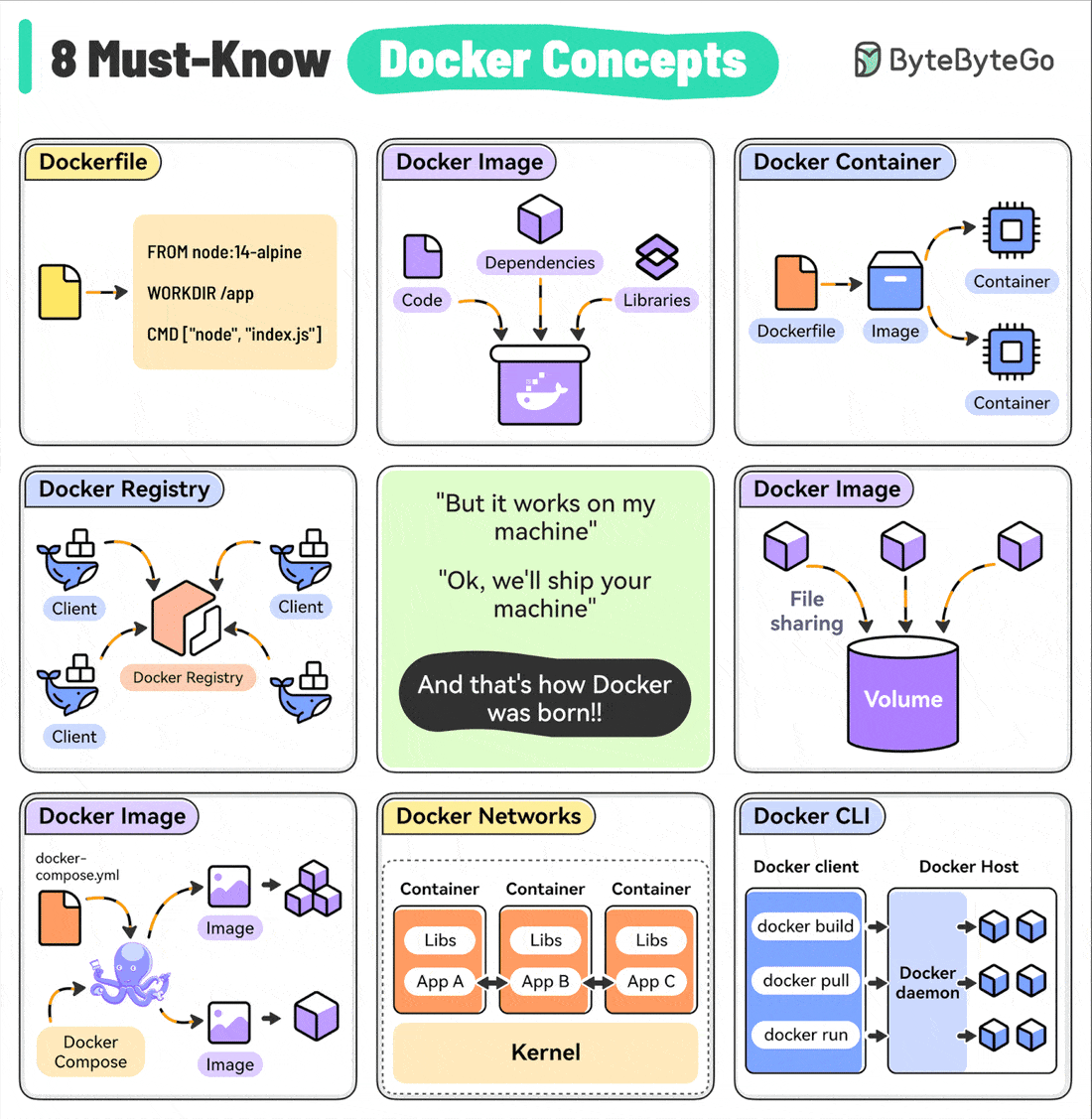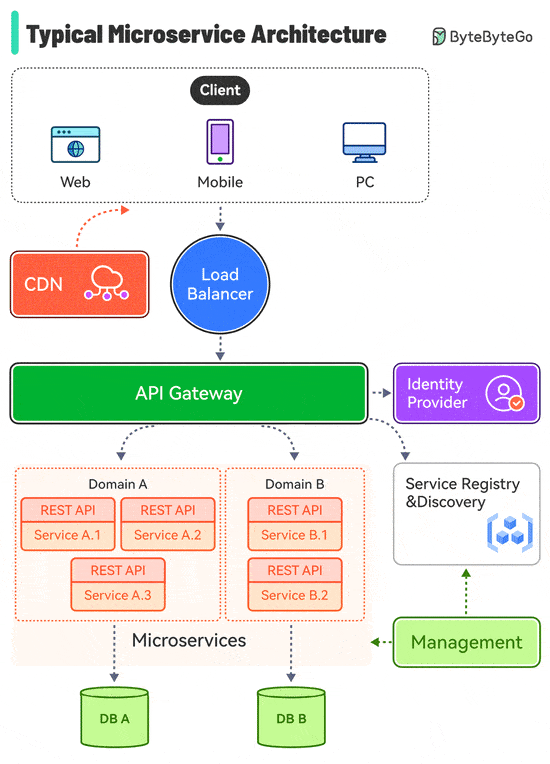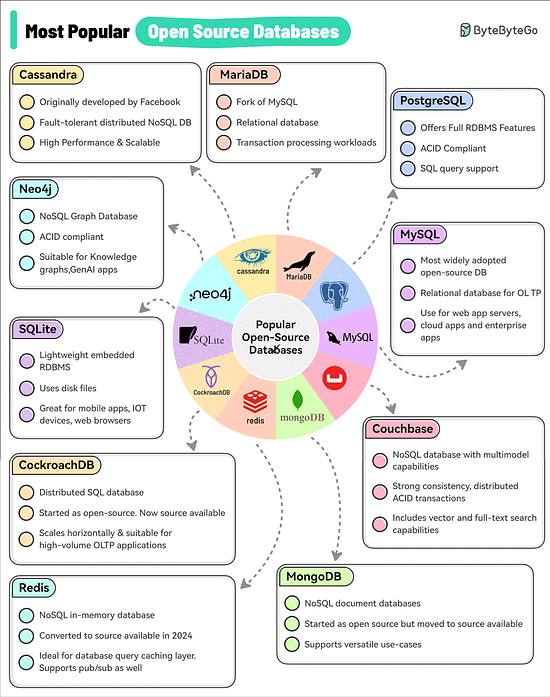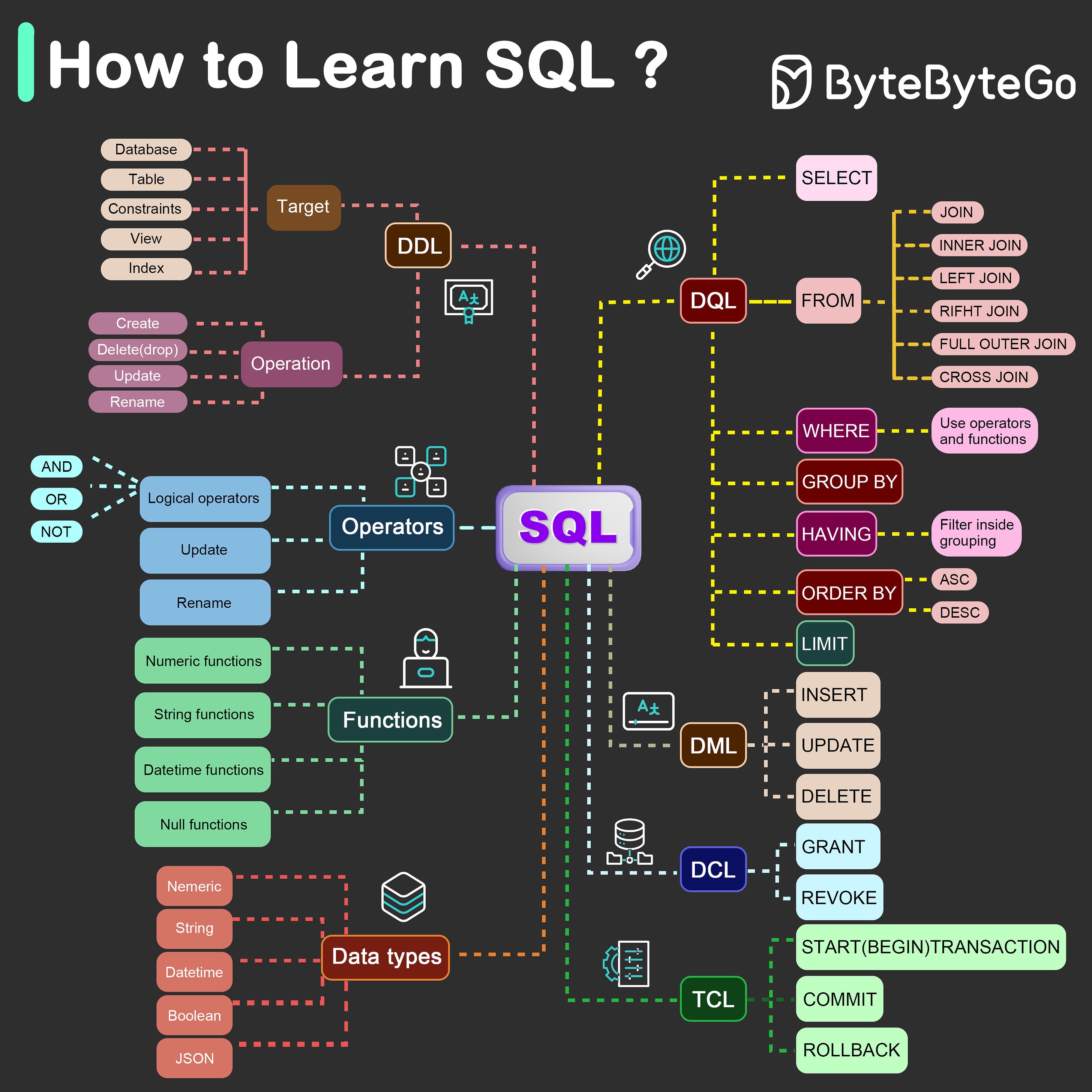Archives
- By thread 5360
-
By date
- June 2021 10
- July 2021 6
- August 2021 20
- September 2021 21
- October 2021 48
- November 2021 40
- December 2021 23
- January 2022 46
- February 2022 80
- March 2022 109
- April 2022 100
- May 2022 97
- June 2022 105
- July 2022 82
- August 2022 95
- September 2022 103
- October 2022 117
- November 2022 115
- December 2022 102
- January 2023 88
- February 2023 90
- March 2023 116
- April 2023 97
- May 2023 159
- June 2023 145
- July 2023 120
- August 2023 90
- September 2023 102
- October 2023 106
- November 2023 100
- December 2023 74
- January 2024 75
- February 2024 75
- March 2024 78
- April 2024 74
- May 2024 108
- June 2024 98
- July 2024 116
- August 2024 134
- September 2024 130
- October 2024 141
- November 2024 171
- December 2024 115
- January 2025 216
- February 2025 140
- March 2025 220
- April 2025 233
- May 2025 239
- June 2025 303
- July 2025 173
-
Do you know how big the space economy could be by 2035?
Only McKinsey
Space industry opportunities Brought to you by Liz Hilton Segel, chief client officer and managing partner, global industry practices, & Homayoun Hatami, managing partner, global client capabilities
—Edited by Belinda Yu, editor, Atlanta
This email contains information about McKinsey's research, insights, services, or events. By opening our emails or clicking on links, you agree to our use of cookies and web tracking technology. For more information on how we use and protect your information, please review our privacy policy.
You received this newsletter because you subscribed to the Only McKinsey newsletter, formerly called On Point.
Copyright © 2024 | McKinsey & Company, 3 World Trade Center, 175 Greenwich Street, New York, NY 10007
by "Only McKinsey" <publishing@email.mckinsey.com> - 01:05 - 18 Jun 2024 -
⏰ Last chance to register: API platform insights on 18 June!
⏰ Last chance to register: API platform insights on 18 June!
Explore the latest API platform insights with industry insiders. Learn about trends, success metrics, and AI's role.Hi Md Abul,
Just a quick heads up that our exciting new online panel discussion - API platform insights 2024 - in collaboration with ResearchHQ - is happening tomorrow! If you haven't registered, now's your last chance to secure your spot.
📅 Date: 18th of June
🕙 Time: 10 am EDT / 3 pm BST
📍 Location: ZoomCome join us for an in-depth discussion of the findings of the API platform insights 2024 report. We'll explore the latest trends in API platforms, discuss success metrics, and examine the role of AI tools in enhancing the efficiency and ROI of platform teams.
Sign up now, and you'll receive an exclusive copy of the full report and access to the on-demand recording after the event.
Thanks,
Budha & teamTyk, 87a Worship Street, London, City of London EC2A 2BE, United Kingdom, +44 (0)20 3409 1911
by "Budhaditya Bhattacharya" <budha@tyk.io> - 06:01 - 17 Jun 2024 -
The final frontier: A leader’s guide to the space economy
Out of this world Brought to you by Liz Hilton Segel, chief client officer and managing partner, global industry practices, & Homayoun Hatami, managing partner, global client capabilities
Few areas of the economy are as dynamic or pervasive in our day-to-day lives as outer space. Space-based technology is improving at a breakneck pace, supporting an ever-growing number of applications that we use here on Earth. And like the universe itself, the business potential seems limitless. McKinsey research suggests that the space economy is at an inflection point: it’s poised to nearly triple in size by 2035, and many industries have something to gain from the connectivity, mobility, and data capabilities that outer space offers. This week, we consider space’s strategic future and how the cosmos could help us solve some of our greatest challenges at home.
There’s a certain romance about space. But its practical applications have made it more accessible and connected to our daily lives than ever—from how we watch movies and stream content to how we track packages to how we grow crops. In a recent episode of The McKinsey Podcast, senior partner Ryan Brukardt explains the ins and outs of the fast-growing space economy and its implications for business and society. “Everybody needs to have [space] in their strategy,” Brukardt says. As space-based innovations grow apace, so does the number of companies that can benefit from them. According to McKinsey global managing partner Bob Sternfels, Brukardt, and colleagues, it’s important for leaders in all industries to bridge the gap between the space community and their customers. They can do so by setting a vision for capturing value from space-related advances, even if it means disrupting their own business; by investing in space through new partnerships or a space-dedicated business line; and by joining the broader dialogue about the space economy’s future to ensure that its benefits are as far-reaching as possible.
That’s how many times the cost performance of satellites has improved in the past five to ten years. According to McKinsey’s Daniel Pacthod and colleagues, such rapid progress has enabled a proliferation of satellite-based use cases, including the ability to observe the effects of climate change on every corner of the planet. And there’s even more that satellites can do to advance sustainability here on Earth. The space sector can do the same, the authors say: for example, by tracking emissions, rating the sustainability of satellite missions, and setting targets for net-zero debris in orbit.
What goes up must come down, at least when you’re in Earth’s gravitational pull. But after an object from the International Space Station crashed into a family’s home in the United States, the lack of a legal framework relating to space junk—and who’s responsible when it falls on personal property—has raised a few eyebrows. Indeed, as space gets increasingly crowded, the need for good governance is greater than ever. A more structured approach to managing the space economy’s risks to infrastructure, data, and people (whether they’re on, or orbiting, the Earth) is key to ensuring its future growth.
Lead by shooting for the moon.
— Edited by Daniella Seiler, executive editor, Washington, DC
Share these insights
Did you enjoy this newsletter? Forward it to colleagues and friends so they can subscribe too. Was this issue forwarded to you? Sign up for it and sample our 40+ other free email subscriptions here.
This email contains information about McKinsey’s research, insights, services, or events. By opening our emails or clicking on links, you agree to our use of cookies and web tracking technology. For more information on how we use and protect your information, please review our privacy policy.
You received this email because you subscribed to the Leading Off newsletter.
Copyright © 2024 | McKinsey & Company, 3 World Trade Center, 175 Greenwich Street, New York, NY 10007
by "McKinsey Leading Off" <publishing@email.mckinsey.com> - 04:42 - 17 Jun 2024 -
Re: Weekly update Shipping information fm China
Dear friend
Greeting
Pls check below :
· Shekou-Jebel Ali 3450/40HQ *2 18th June
· Ningbo-Dammam 4000/40HQ *3 26th June
· Shanghai-Riyadh 3550/20GP ; 4650/40HQ 11th June
There is the peak season coming , rate increase sharply minute by minute
Space is hard to book these days . Don't waste time and face a higher rate !
Best regards
--------
Yori
NVOCC:MOC-NV09845
Winsail International Logistics Co.,Ltd
QQ:1586409909
Mob/Whatsapp: +86 13660987349
Email: overseas.12@winsaillogistics.com
by "Yori" <overseas10@gz-logistics.cn> - 03:45 - 17 Jun 2024 -
How widespread is the use of generative AI?
Only McKinsey
Our latest McK global survey Brought to you by Liz Hilton Segel, chief client officer and managing partner, global industry practices, & Homayoun Hatami, managing partner, global client capabilities
•
High expectations for gen AI. 2024 is the year organizations truly begin using—and deriving business value from—gen AI, Alex Singla, McKinsey senior partner and global leader of QuantumBlack, AI by McKinsey, and coauthors share. Our latest McKinsey Global Survey on AI finds that respondents’ expectations for gen AI’s impact remain as high as they were last year, with three-quarters predicting that gen AI will lead to significant or disruptive change in their industries in the years ahead.
•
Surge in adoption. For the past six years, AI adoption by respondents’ organizations has hovered at about 50%. This year, the survey finds that adoption has jumped to 72%. Companies are also now using AI in more parts of the business, with half of respondents saying their organizations have adopted AI in two or more business functions. Learn what high-performing companies are doing differently to create value from gen AI adoption, and visit McKinsey Digital to see examples of how companies are competing with technology.
—Edited by Belinda Yu, editor, Atlanta
This email contains information about McKinsey's research, insights, services, or events. By opening our emails or clicking on links, you agree to our use of cookies and web tracking technology. For more information on how we use and protect your information, please review our privacy policy.
You received this newsletter because you subscribed to the Only McKinsey newsletter, formerly called On Point.
Copyright © 2024 | McKinsey & Company, 3 World Trade Center, 175 Greenwich Street, New York, NY 10007
by "Only McKinsey" <publishing@email.mckinsey.com> - 11:06 - 16 Jun 2024 -
The quarter’s top themes
McKinsey&Company
At #1: What's the future of AI? In the second quarter of 2024, our top ten posts from McKinsey Themes highlighted topics including generative AI, the traits of good bosses, and more. At No. 1 is What's the future of AI?, which draws on insights from articles by McKinsey’s Eric Lamarre, Rodney W. Zemmel, Kate Smaje, Michael Chui, Ida Kristensen, and more. Read on for our full top 10.

2. 100 articles on generative AI
Since generative AI (gen AI) burst onto the scene in late 2022, it’s captivated business leaders and society at large. The excitement is well deserved: McKinsey research indicates that gen AI could add the equivalent of $2.6 trillion to $4.4 trillion of value annually—and redefine the way people work and live. Plus, our top 10

3. How to be a better boss
It’s often said that your manager can make or break your experience at a job. Unfortunately, it seems that almost everyone can recall working under a bad boss at least once in their career. How do so many bad leaders come into a position of power in the first place, and why do they remain there? Traits that make great leaders
Did you know that McKinsey partners regularly speak with top CEOs across industries to glean valuable perspectives? Our recent and best interviews cover a range of topics, from navigating disruption to effective crisis leadership. Dive into our curated selection below for insights from these impactful leaders, and learn what it takes to thrive in today's uniquely challenging business environment. Get perspective
Share these insights
This email contains information about McKinsey’s research, insights, services, or events. By opening our emails or clicking on links, you agree to our use of cookies and web tracking technology. For more information on how we use and protect your information, please review our privacy policy.
You received this email because you are a registered member of the Top Ten Most Popular newsletter.
Copyright © 2024 | McKinsey & Company, 3 World Trade Center, 175 Greenwich Street, New York, NY 10007
by "McKinsey Top Ten" <publishing@email.mckinsey.com> - 06:46 - 16 Jun 2024 -
The week in charts
The Week in Charts
AI’s effect on workforce skills, healthcare gaps, and more Share these insights
Did you enjoy this newsletter? Forward it to colleagues and friends so they can subscribe too. Was this issue forwarded to you? Sign up for it and sample our 40+ other free email subscriptions here.
This email contains information about McKinsey's research, insights, services, or events. By opening our emails or clicking on links, you agree to our use of cookies and web tracking technology. For more information on how we use and protect your information, please review our privacy policy.
You received this email because you subscribed to The Week in Charts newsletter.
Copyright © 2024 | McKinsey & Company, 3 World Trade Center, 175 Greenwich Street, New York, NY 10007
by "McKinsey Week in Charts" <publishing@email.mckinsey.com> - 03:32 - 15 Jun 2024 -
Five exercises to help you lead at your best
Make behavioral changes stick Brought to you by Liz Hilton Segel, chief client officer and managing partner, global industry practices, & Homayoun Hatami, managing partner, global client capabilities
How exceptional leaders lead
Imagine you’re an avid basketball player. Your rebounding could use some work, but your three-point game is stellar. Where to spend your time? If you’re like the pros, you won’t waste too much of it trying to perfect your weakness. Instead, you’ll focus on your strength—and ensure that you sink those threes every time. If you’re a business leader, the same lesson applies. Often, people spend great amounts of energy on their shortcomings—to unsatisfying results. But playing to your strengths and integrating them into your daily work can be much more inspiring for both you and your team.
While focusing on one’s strengths might seem obvious, doing so often requires a shift in mindset. This is a crucial step when adopting new behavior, and it’s one that leaders often neglect in favor of immediate action. But ignoring the attitudes and beliefs behind previous behavior all but ensures that the new behavior a person hopes to adopt won’t stick. Leaders who are in tune with the mindsets that dictate their actions are better equipped to guide their organizations toward effective behavioral change.
Finding your strength is one of five key exercises leaders can use to be more aware of their mindsets. To explore the other four—including the power of taking a pause and how to ask solution-focused questions—and to learn how to shift your own mindset in service of stronger, more purposeful leadership, read Johanne Lavoie’s 2014 McKinsey Quarterly classic, “Lead at your best.”Lead better by shifting your mindset 


Share these insights
Did you enjoy this newsletter? Forward it to colleagues and friends so they can subscribe too. Was this issue forwarded to you? Sign up for it and sample our 40+ other free email subscriptions here.
This email contains information about McKinsey's research, insights, services, or events. By opening our emails or clicking on links, you agree to our use of cookies and web tracking technology. For more information on how we use and protect your information, please review our privacy policy.
You received this email because you subscribed to our McKinsey Classics newsletter.
Copyright © 2024 | McKinsey & Company, 3 World Trade Center, 175 Greenwich Street, New York, NY 10007
by "McKinsey Classics" <publishing@email.mckinsey.com> - 12:28 - 15 Jun 2024 -
EP116: 11 steps to go from Junior to Senior Developer
EP116: 11 steps to go from Junior to Senior Developer
This week’s system design refresher: What is Data Pipeline? | Why Is It So Popular? (Youtube video) 11 steps to go from Junior to Senior Developer Top 8 must-know Docker concepts What does a typical microservice architecture look like? Top 10 Most Popular Open-Source Databases͏ ͏ ͏ ͏ ͏ ͏ ͏ ͏ ͏ ͏ ͏ ͏ ͏ ͏ ͏ ͏ ͏ ͏ ͏ ͏ ͏ ͏ ͏ ͏ ͏ ͏ ͏ ͏ ͏ ͏ ͏ ͏ ͏ ͏ ͏ ͏ ͏ ͏ ͏ ͏ ͏ ͏ ͏ ͏ ͏ ͏ ͏ ͏ ͏ ͏ ͏ ͏ ͏ ͏ ͏ ͏ ͏ ͏ ͏ ͏ ͏ ͏ ͏ ͏ ͏ ͏ ͏ ͏ ͏ ͏ ͏ ͏ ͏ ͏ ͏ ͏ ͏ ͏ ͏ ͏ ͏ ͏ ͏ ͏ ͏ ͏ ͏ ͏ ͏ ͏ ͏ ͏ ͏ ͏ ͏ ͏ ͏ ͏ ͏ ͏ ͏ ͏ ͏ ͏ ͏ ͏ ͏ ͏ ͏ ͏ ͏ ͏ ͏ ͏ ͏ ͏ ͏ ͏ ͏ ͏ ͏ ͏ ͏ ͏ ͏ ͏ ͏ ͏ ͏ ͏ ͏ ͏ ͏ ͏ ͏ ͏ ͏ ͏ ͏ ͏ ͏ ͏ ͏ ͏ ͏ ͏ ͏ ͏ ͏ ͏ ͏ ͏ ͏ ͏ ͏ ͏ ͏ ͏ ͏ ͏ ͏ ͏ ͏ ͏ ͏ ͏ ͏ ͏ ͏ ͏ ͏ ͏ ͏ ͏ ͏ ͏ ͏ ͏ ͏ ͏ ͏ ͏ ͏ ͏ ͏ ͏ ͏ ͏ ͏ ͏ ͏ ͏ ͏ ͏ ͏ ͏ ͏ ͏ ͏ ͏ Forwarded this email? Subscribe here for moreThis week’s system design refresher:
What is Data Pipeline? | Why Is It So Popular? (Youtube video)
11 steps to go from Junior to Senior Developer
Top 8 must-know Docker concepts
What does a typical microservice architecture look like?
Top 10 Most Popular Open-Source Databases
SPONSOR US
New Relic Digital Monitoring Experience (DEM) (Sponsored)
New Relic DEM solutions are designed to provide comprehensive insights into digital operations, allowing teams to optimize user experiences in real time.
Download the datasheet for an overview of New Relic DEM capabilities:
Real user monitoring (RUM): Browser monitoring and mobile monitoring
Pixel-perfect replays: Session replay
Proactive issue detection: Synthetic monitoring, mobile user journeys (crash analysis), and error tracking (errors inbox)
Integration and collaboration: In-app collaboration capabilities
What is Data Pipeline? | Why Is It So Popular?
11 steps to go from Junior to Senior Developer
Collaboration Tools
Software development is a social activity. Learn to use collaboration tools like Jira, Confluence, Slack, MS Teams, Zoom, etc.Programming Languages
Pick and master one or two programming languages. Choose from options like Java, Python, JavaScript, C#, Go, etc.API Development
Learn the ins and outs of API Development approaches such as REST, GraphQL, and gRPC.Web Servers and Hosting
Know about web servers as well as cloud platforms like AWS, Azure, GCP, and KubernetesAuthentication and Testing
Learn how to secure your applications with authentication techniques such as JWTs, OAuth2, etc. Also, master testing techniques like TDD, E2E Testing, and Performance TestingDatabases
Learn to work with relational (Postgres, MySQL, and SQLite) and non-relational databases (MongoDB, Cassandra, and Redis).CI/CD
Pick tools like GitHub Actions, Jenkins, or CircleCI to learn about continuous integration and continuous delivery.Data Structures and Algorithms
Master the basics of DSA with topics like Big O Notation, Sorting, Trees, and Graphs.System Design
Learn System Design concepts such as Networking, Caching, CDNs, Microservices, Messaging, Load Balancing, Replication, Distributed Systems, etc.Design patterns
Master the application of design patterns such as dependency injection, factory, proxy, observers, and facade.AI Tools
To future-proof your career, learn to leverage AI tools like GitHub Copilot, ChatGPT, Langchain, and Prompt Engineering.
Over to you: What else would you add to the roadmap?
Latest articles
If you’re not a paid subscriber, here’s what you missed.
To receive all the full articles and support ByteByteGo, consider subscribing:
Top 8 must-know Docker concepts
Dockerfile: It contains the instructions to build a Docker image by specifying the base image, dependencies, and run command.
Docker Image: A lightweight, standalone package that includes everything (code, libraries, and dependencies) needed to run your application. Images are built from a Dockerfile and can be versioned.
Docker Container: A running instance of a Docker image. Containers are isolated from each other and the host system, providing a secure and reproducible environment for running your apps.
Docker Registry: A centralized repository for storing and distributing Docker images. For example, Docker Hub is the default public registry but you can also set up private registries.
Docker Volumes: A way to persist data generated by containers. Volumes are outside the container’s file system and can be shared between multiple containers.
Docker Compose: A tool for defining and running multi-container Docker applications, making it easy to manage the entire stack.
Docker Networks: Used to enable communication between containers and the host system. Custom networks can isolate containers or enable selective communication.
Docker CLI: The primary way to interact with Docker, providing commands for building images, running containers, managing volumes, and performing other operations.
Over to you: What other concept should one know about Docker?
What does a typical microservice architecture look like? 👇
The diagram below shows a typical microservice architecture.
Load Balancer: This distributes incoming traffic across multiple backend services.
CDN (Content Delivery Network): CDN is a group of geographically distributed servers that hold static content for faster delivery. The clients look for content in CDN first, then progress to backend services.
API Gateway: This handles incoming requests and routes them to the relevant services. It talks to the identity provider and service discovery.
Identity Provider: This handles authentication and authorization for users.
Service Registry & Discovery: Microservice registration and discovery happen in this component, and the API gateway looks for relevant services in this component to talk to.
Management: This component is responsible for monitoring the services.
Microservices: Microservices are designed and deployed in different domains. Each domain has its database.
Over to you:
What are the drawbacks of the microservice architecture?
Have you seen a monolithic system be transformed into microservice architecture? How long does it take?
Top 10 Most Popular Open-Source Databases
This list is based on factors like adoption, industry impact, and the general awareness of the database among the developer community.
MySQL
PostgreSQL
MariaDB
Apache Cassandra
Neo4j
SQLite
CockroachDB
Redis
MongoDB
Couchbase
Over to you: Which other database would you add to this list?
SPONSOR US
Get your product in front of more than 500,000 tech professionals.
Our newsletter puts your products and services directly in front of an audience that matters - hundreds of thousands of engineering leaders and senior engineers - who have influence over significant tech decisions and big purchases.
Space Fills Up Fast - Reserve Today
Ad spots typically sell out about 4 weeks in advance. To ensure your ad reaches this influential audience, reserve your space now by emailing hi@bytebytego.com
Like
Comment
Restack
© 2024 ByteByteGo
548 Market Street PMB 72296, San Francisco, CA 94104
Unsubscribe
by "ByteByteGo" <bytebytego@substack.com> - 11:36 - 15 Jun 2024 -
Looking for guest post
Hi Sir/Madam,
I have visited your website, and it looks good. I am in search of sites to publish my articles and get backlinks in return. Will you accept my guest post? In case you accept guest posts, tell me the topic and criteria to write an article for you? Otherwise, give me a do-follow backlink from your existing post. What will be the minimum price for the permanent article with a do-follow backlink for general posts as well as casino/betting/CBD and existing post backlinks?
Hope for positive feedback from your end.
by "Muhammad asad Gujjer" <muhammadasadgujjer@gmail.com> - 10:56 - 14 Jun 2024 -
Delivering services to the public—digitally—with Jennifer Pahlka
Listen in New from McKinsey Global Institute

Delivering services to the public—digitally—with Jennifer Pahlka
Listen in Prefer audio? Listen to the podcast, and explore past episodes of the Forward Thinking Podcast. Subscribe via Apple Podcast or Spotify.

Forward Thinking on measuring the value of the digital age with Avinash Collis

This email contains information about McKinsey's research, insights, services, or events. By opening our emails or clicking on links, you agree to our use of cookies and web tracking technology. For more information on how we use and protect your information, please review our privacy policy.
You received this email because you subscribed to our McKinsey Global Institute alert list.
Copyright © 2024 | McKinsey & Company, 3 World Trade Center, 175 Greenwich Street, New York, NY 10007
by "McKinsey & Company" <publishing@email.mckinsey.com> - 02:57 - 14 Jun 2024 -
The real risk of gen AI
The Shortlist
Four new insights Curated by Liz Hilton Segel, chief client officer and managing partner, global industry practices, & Homayoun Hatami, managing partner, global client capabilities
Last time, we told you the gen AI honeymoon can’t last forever. This edition of the CEO Shortlist explores what happens as we move from proof of concept to sustained sources of new value. As we know, it’s never just about the tech; gen AI is not a magic wand that will solve underlying organizational issues. Today’s leading executives are exploring how to integrate gen AI into their businesses by managing risks, building new capabilities, and aligning resources with strategy. We hope you enjoy the read.
—Liz and Homayoun
Still on the sidelines? If your company hasn’t moved yet on AI, you’re at risk of being left behind. Our latest survey shows that 72 percent of companies have adopted the technology and that in just one year, users of gen AI have doubled. We also learned where companies are using this tool and how much they’re investing in it.
Get in the game with “The state of AI in early 2024: Gen AI adoption spikes and starts to generate value,” by Alex Singla, Alexander Sukharevsky, Lareina Yee, and coauthors.Quit searching: money trees don’t exist. The money for gen AI transformations and other strategic initiatives typically has to be reallocated from somewhere else. But that’s easier said than done. Too often, annual resource allocation processes ultimately fail to align resources with strategy.
No need to panic, though. Read “Keep calm and allocate capital: Six process improvements,” by McKinsey partner Tim Koller.The biggest risk with gen AI? Not taking a risk with gen AI. “There is substantial risk associated with not diving in,” says McKinsey senior partner Ida Kristensen. But that doesn’t mean you should jump in without looking. Leaders should incorporate safeguards around data privacy, bias, and explainability when strategizing gen AI programs.
Risky business? Not necessarily. Check out “Managing the risks around generative AI,” the latest episode of McKinsey’s Inside the Strategy Room podcast, featuring Kristensen and McKinsey partner Oliver Bevan.We hope you find these ideas inspiring and helpful. See you next time with four more McKinsey ideas for the CEO and others in the C-suite.
Share these insights
This email contains information about McKinsey’s research, insights, services, or events. By opening our emails or clicking on links, you agree to our use of cookies and web tracking technology. For more information on how we use and protect your information, please review our privacy policy.
You received this email because you subscribed to The CEO Shortlist newsletter.
Copyright © 2024 | McKinsey & Company, 3 World Trade Center, 175 Greenwich Street, New York, NY 10007
by "McKinsey CEO Shortlist" <publishing@email.mckinsey.com> - 04:45 - 14 Jun 2024 -
Do you know which generations are most eager to travel?
Only McKinsey
Our 2024 report on tourism and hospitality Brought to you by Liz Hilton Segel, chief client officer and managing partner, global industry practices, & Homayoun Hatami, managing partner, global client capabilities
•
Generations that prioritize travel. Global travel is back. After declining by 75% in 2020, travel is on its way to making a full recovery by the end of 2024, with domestic travel still representing the bulk of the market, McKinsey senior partner Caroline Tufft and coauthors explain. To gauge what’s on the minds of present-day travelers, McKinsey surveyed more than 5,000 of them. The results show that younger generations (Gen Zers and millennials), in particular, show significant and increasing interest in travel.
—Edited by Belinda Yu, editor, Atlanta
This email contains information about McKinsey's research, insights, services, or events. By opening our emails or clicking on links, you agree to our use of cookies and web tracking technology. For more information on how we use and protect your information, please review our privacy policy.
You received this newsletter because you subscribed to the Only McKinsey newsletter, formerly called On Point.
Copyright © 2024 | McKinsey & Company, 3 World Trade Center, 175 Greenwich Street, New York, NY 10007
by "Only McKinsey" <publishing@email.mckinsey.com> - 01:35 - 14 Jun 2024 -
A Crash Course on Cell-based Architecture
A Crash Course on Cell-based Architecture
No one wants to sail in a ship that can sink because of a single hull breach. This led to the development of bulkheads, which are vertical partition walls that divide a ship’s interior into watertight compartments. Cell-based architecture attempts to follow the same concept in software development.͏ ͏ ͏ ͏ ͏ ͏ ͏ ͏ ͏ ͏ ͏ ͏ ͏ ͏ ͏ ͏ ͏ ͏ ͏ ͏ ͏ ͏ ͏ ͏ ͏ ͏ ͏ ͏ ͏ ͏ ͏ ͏ ͏ ͏ ͏ ͏ ͏ ͏ ͏ ͏ ͏ ͏ ͏ ͏ ͏ ͏ ͏ ͏ ͏ ͏ ͏ ͏ ͏ ͏ ͏ ͏ ͏ ͏ ͏ ͏ ͏ ͏ ͏ ͏ ͏ ͏ ͏ ͏ ͏ ͏ ͏ ͏ ͏ ͏ ͏ ͏ ͏ ͏ ͏ ͏ ͏ ͏ ͏ ͏ ͏ ͏ ͏ ͏ ͏ ͏ ͏ ͏ ͏ ͏ ͏ ͏ ͏ ͏ ͏ ͏ ͏ ͏ ͏ ͏ ͏ ͏ ͏ ͏ ͏ ͏ ͏ ͏ ͏ ͏ ͏ ͏ ͏ ͏ ͏ ͏ ͏ ͏ ͏ ͏ ͏ ͏ ͏ ͏ ͏ ͏ ͏ ͏ ͏ ͏ ͏ ͏ ͏ ͏ ͏ ͏ ͏ ͏ ͏ ͏ ͏ ͏ ͏ ͏ ͏ ͏ ͏ ͏ ͏ ͏ ͏ ͏ ͏ ͏ ͏ ͏ ͏ ͏ ͏ ͏ ͏ ͏ ͏ ͏ ͏ ͏ ͏ ͏ ͏ ͏ ͏ ͏ ͏ ͏ ͏ ͏ ͏ ͏ ͏ ͏ ͏ ͏ ͏ ͏ ͏ ͏ ͏ ͏ ͏ ͏ ͏ ͏ ͏ ͏ ͏ ͏ Forwarded this email? Subscribe here for moreLatest articles
If you’re not a subscriber, here’s what you missed this month.
To receive all the full articles and support ByteByteGo, consider subscribing:
No one wants to sail in a ship that can sink because of a single hull breach.
This led to the development of bulkheads, which are vertical partition walls that divide a ship’s interior into watertight compartments.
Cell-based architecture attempts to follow the same concept in software development.
In cell-based architecture, there are multiple isolated instances of a workload, where each instance is known as a cell. There are three properties of a cell:
Each cell is independent.
A cell does not share the state with other cells.
Each cell handles a subset of the overall traffic.
For example, imagine a web application that handles user requests. In a cell-based architecture, multiple cells of the same web application would be deployed, each serving a subset of the user requests. These cells are copies of the same application working together to distribute the workload.
This approach reduces the blast radius of impact. If a workload uses 5 cells to service 50 requests, a failure in only one cell means that 80% of the requests are unaffected by the failure.
In other words, failure isolation is the biggest benefit of a cell-based architecture.
In this post, we will learn about the various aspects of cell-based architecture and its various components in more detail.
What is a Workload?...

Continue reading this post for free, courtesy of Alex Xu.
A subscription gets you:
An extra deep dive on Thursdays Full archive Many expense it with team's learning budget Like
Comment
Restack
© 2024 ByteByteGo
548 Market Street PMB 72296, San Francisco, CA 94104
Unsubscribe
by "ByteByteGo" <bytebytego@substack.com> - 11:36 - 13 Jun 2024 -
Three reasons to attend our API insights webinar on 18 June
Three reasons to attend our API insights webinar on 18 June
Learn about critical API trends, future-proof your platform, and get actionable advice. Sign up today!Hi Md Abul,
Our API platform insights 2024 webinar, in partnership with ResearchHQ, is happening next week! We believe this event is a must-attend and have outlined three reasons below why it must be on your calendar for next week.
📅 Date: 18th of June
🕙 Time: 10 am EDT / 3 pm BST
📍 Location: ZoomHere's three practical reasons why you must attend:
- Uncover hidden digital infrastructure issues. Gain insights into critical challenges and learn where to act for maximum efficiency.
- Explore new API trends. With 26% of organisations using AI and 54% prioritising automation, stay updated on the latest advancements to future-proof your platform and team.
- Seize the opportunity to learn from industry experts. 46% of organisations focus on metrics that drive business value and ROI. Get practical advice to enhance your API strategy.
Register today, and you'll receive an exclusive copy of the full report and access to the on-demand recording after the event.
Thanks,
Budha & teamTyk, 87a Worship Street, London, City of London EC2A 2BE, United Kingdom, +44 (0)20 3409 1911
by "Budhaditya Bhattacharya" <budha@tyk.io> - 06:17 - 13 Jun 2024 -
RE: Learn
Hello,
Did you have a chance to view my previous email which I have sent you?
Kindly share your thoughts about acquiring the list, so that we can give you the cost & count details.
Regards,
Jessica
From: Jessica Martin
Sent: Thursday, June 6, 2024 4:06 PM
To: info@learn.odoo.com
Subject: LearnDear Exhibitor,
Hope this note finds you well.
I am writing to confirm, whether you are interested in acquiring the attendees mailing list of the below mentioned tradeshow ?
IRMA 2024 (June 20-22, 2024 | Hamburg, Germany)
Information fields include : Contact name Company name Job Title Company Mailing address with Zip Code Phone Number Website URL and contact person verified business email address.
The complete list is available for a small investment, with unlimited usage rights, you can use this list for your regular marketing campaigns too.
Please let me know your interest so that we can get back to you with more details on Counts and Pricing available for this list.
Thank you and we awaiting your response.
Regards,
Jessica Martin - Events & Trade Show Specialist.
To remove from this mailing: reply with subject line as "Remove"
by "Jessica Martin" <jessica.martin@reachprospects.onmicrosoft.com> - 06:03 - 13 Jun 2024 -
What can AI do for business?
Only McKinsey
Breaking down barriers to integrating AI Brought to you by Liz Hilton Segel, chief client officer and managing partner, global industry practices, & Homayoun Hatami, managing partner, global client capabilities
•
Expanding AI use. All kinds of businesses will find merit in AI. Using AI has matured from manufacturing and risk to marketing and sales, product and service development, and strategy and corporate finance, according to research by McKinsey senior partner and QuantumBlack, AI by McKinsey, global leader Alex Singla and coauthors. Organizations that make bigger AI investments, scale more quickly, and recruit and train top AI talent are finding a competitive edge over those that don’t. But most organizations are currently only testing the AI waters. Explore three major shifts organizations can make to scale up AI.
—Edited by Querida Anderson, senior editor, New York
This email contains information about McKinsey's research, insights, services, or events. By opening our emails or clicking on links, you agree to our use of cookies and web tracking technology. For more information on how we use and protect your information, please review our privacy policy.
You received this newsletter because you subscribed to the Only McKinsey newsletter, formerly called On Point.
Copyright © 2024 | McKinsey & Company, 3 World Trade Center, 175 Greenwich Street, New York, NY 10007
by "Only McKinsey" <publishing@email.mckinsey.com> - 01:47 - 13 Jun 2024 -
Carbon removals are vital to a net-zero future
Re:think
The market for carbon removals could be significant FRESH TAKES ON BIG IDEAS
ON CARBON REMOVALS
Why more businesses are counting on carbon removalsMark Patel
Reducing carbon emissions is fundamental to reaching net-zero targets. There’s no dispute about that. But, to date, there aren’t enough solutions at scale to reduce emissions fast enough. That’s why carbon removal has emerged as a vital way to help meet climate targets, to bridge the gap between emissions reduction and a net-zero future. A look at companies that have been transparent about their path to decarbonization shows that an increasing number are relying on negative emissions.
Carbon removal entails removing CO2 from the atmosphere and storing it somewhere environmentally safe, such as in oceans or in the ground. There are both nature-based and technology-based solutions to do this. Many of these solutions have great potential, from agricultural practices that enhance CO2 uptake into soils to direct air capture, which draws CO2 directly from the atmosphere. However, these solutions are not yet available at scale. Today, although the world might be removing thousands of tons of CO2 per year, to make a real impact on climate change, the world needs to remove gigatons (billions of tons) of CO2 per year.
Scaling the carbon removals industry is going to be an enormous task. For example, the supply side requires significant investment in innovation, technology, and infrastructure to drive down costs and support project development. Our analysis estimates that, to meet net-zero targets by 2050, cumulative investment in carbon removals would have to reach $6 trillion to $16 trillion. The demand side is also quite nascent, and there’s a lot of uncertainty. Voluntary carbon credit markets create a mechanism for purchasing removals, but the reality is that the big purchases of removals are being funded by a relatively small number of companies.
However, the carbon removal industry presents a significant opportunity for businesses. Our research indicates that the market for carbon removals could be worth up to $1.2 trillion by 2050. Early buyers of carbon removals could have an opportunity to solidify a supply of reliable, high-quality carbon removal credits as demand takes off.“Our research indicates that the market for carbon removals could be worth up to $1.2 trillion by 2050.”
There are supplier companies that have the capabilities, technologies, or infrastructure to find value in scaling up removals. According to our analysis, suppliers—businesses that generate carbon credits based on removals—could earn 70 to 80 percent of the expected $300 billion to $1.2 trillion in market revenues. That’s roughly $200 billion to $950 billion by 2050. There are also companies that can reduce their carbon footprints by deploying removal technologies. For example, one removal approach is called enhanced weathering, where rock dust is spread onto fields, capturing CO2 as it weathers. For agriculture or consumer goods companies in the food value chain, this activity could help reduce their net emissions.
For the carbon removal industry to scale, a few things need to happen. For one, there are practical limitations on how quickly companies can prove their technology works at scale. And then there’s the challenge of convincing investors and other sources of capital to fund nascent technologies. Advanced market commitments are a way for buyers to purchase future carbon removals and help solidify demand for suppliers, so they have a line of sight to their end customers while they scale. Governments can also stimulate carbon removal markets, such as with tax credits, as in the United States. This kind of support can help fund R&D, move carbon removal technologies down the cost curve, and encourage more investment.
It’s still early days for the carbon removal industry. Understanding of the technologies and market potential is low across most sectors. How carbon removal fits alongside other decarbonization activities is also not well understood. But given the net-zero commitments that companies and governments have already made—not even factoring in future commitments—the market for carbon removals is likely going to exist, and it could be big. There’s always a chance that market sentiment, regulation, and voluntary corporate behavior alter the course of things. But if companies play forward today’s trends, carbon removals could be an industrial segment in its own right.ABOUT THIS AUTHOR
Mark Patel is a senior partner in McKinsey’s Bay Area office.
MORE FROM THIS AUTHOR
UP NEXT
Michael Birshan on strategic courage
It’s not enough to ride out waves of economic and political uncertainty. These are the times when leaders need to be the boldest and bravest.
This email contains information about McKinsey’s research, insights, services, or events. By opening our emails or clicking on links, you agree to our use of cookies and web tracking technology. For more information on how we use and protect your information, please review our privacy policy.
You received this email because you subscribed to our McKinsey Quarterly alert list.
Copyright © 2024 | McKinsey & Company, 3 World Trade Center, 175 Greenwich Street, New York, NY 10007
by "McKinsey Quarterly" <publishing@email.mckinsey.com> - 02:32 - 12 Jun 2024 -
Packaging Services
Hi, We are a custom packaging company based in NewYork, NY. We provide packaging services, such as custom printed boxes/labels and bags. We provide these services almost worldwide. Send over your artwork and confirm the quantity so I can assist you. Thanks. Best Regards, Austin America Custom Packaging, LLC.
by austin.americacustompackaging@gmail.com - 11:10 - 12 Jun 2024 -
Your Reliable Translation Partner Mars Translation
Hello there,
It’s Mona from Mars Translation who is a professional translation & localization company. We are seeking an opportunity to work with you. Could you share with me some information about your plans or translation project?
At Mars Translation, we provide 120+ languages & 20+ industries. To build trust, we are offering a free translation of the 300-word count of your project. Only then, after your satisfaction, we ask you to proceed with our services. This way you will know exactly what you are getting into before spending any time can translate/localizing your projects exactly to your expectations.
If it sounds interesting, please respond back so that we can discuss your project details.
If you have no need to, please reply with “unsub”, we will not send emails from our side.
Mona Xiang�0�2| Global Business Developer
Phone/WhatsApp: +86�0�2178 7209 0469
Don’t want to receive any further emails? Reply with ‘Unsub'
by "Mona Xiang" <mona.xiang@marstranslation.co> - 05:36 - 12 Jun 2024





























